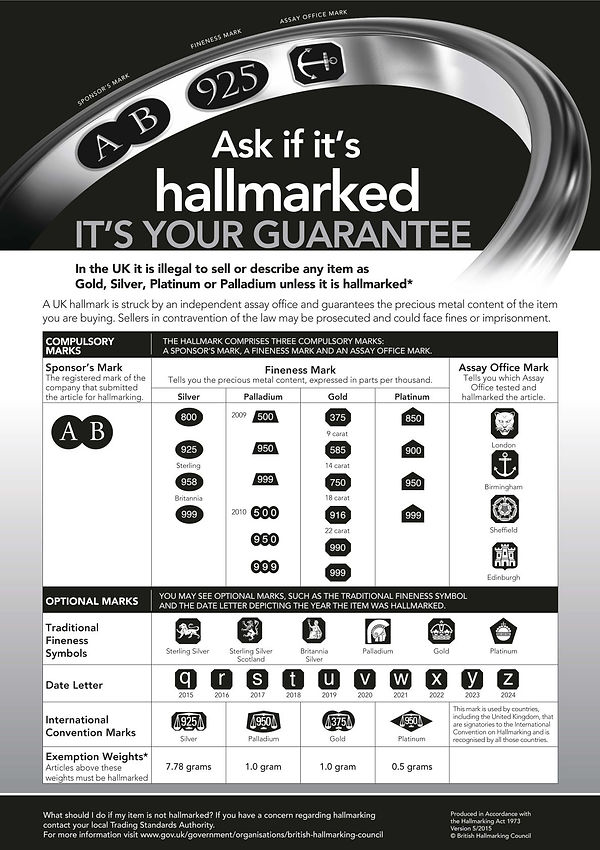Hallmarking
Hallmarking Jewellery is a way of protecting you when buying precious metal ie silver, jewellery. For certain pieces I will send them to the Edinburgh Assay office and they will check that they are "what I say they are" and once they pass the test, they will be stamped with my own Sponsor Mark ie Let's Rock Jewellery. By law only pieces which weigh over 7.78gms, but I like to do this when every I can to give you that peace of mind.


About Hallmarking
(Extract from the Edinburgh Assay Office)
Gold, silver, platinum and palladium are rarely used in their purest form. Instead, they are usually alloyed with lesser metals to achieve a desired strength, durability, and colour. It is not possible to detect by sight or touch the precious metal content of an item. Therefore, it is a legal requirement that any item containing gold, silver, platinum or palladium be hallmarked, if it is to be described as such.
A hallmark tells the story of who made an article, what the article is made of (gold, silver, platinum, or palladium), the fineness of the precious metal, and where the article was assayed.
A hallmark must consist of at least three compulsory marks; a Sponsor’s mark (Maker’s mark), a Metal Fineness mark, and an Assay Office town mark. A hallmark may also include an optional date letter, indicating when the article was hallmarked, or an optional traditional Metal Fineness mark, such as the Lion Rampant (Sterling silver). View the dealers notice to finds out what a hallmark looks like. Read our simple guide to "what should be hallmarked".
Read the current UK Hallmarking Act



